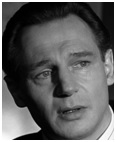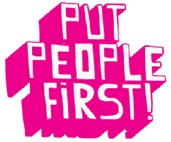|
 |
|
 |
|
|
||
Schindler’s List - Ethics and the Holocaust
Schindler’s List (1993)
Famous for...
Based on... Australian Thomas Keneally’s (pictured right) book, Schindler’s Ark.
Director Steven Spielberg (pictured right below). Spielberg (a Jew himself) wanted to:
Oscars Seven including Spielberg’s (pictured right) first ever Oscars for:
Key characters Oskar Schindler (Liam Neeson), businessman (pictured right). Itzhak Stern (Ben Kingsley), his Jewish accountant. Amon Goeth (Ralph Fiennes), evil Nazi.
The story Oskar Schindler, is a:
In March, 1941, the Nussbaum family, along with thousands of other Jews, are forced into the small Krakow ghetto, leaving Schindler to move into the Nussbaums’ luxury apartment. Helped by his Jewish accountant (Itzhak Stern, pictured right together) and Jewish investors, Schindler buys a cut price enamelware factory confiscated from its Jewish owners. Much to Stern’s disgust, Schindler:
Stern wants them because they are classified as “essential” and so are saved death in the
concentration camps. Schindler begins to realize Stern’s rescue plan, when Stern is thanked by an elderly one armed man for:
Soon after Schindler has to rescue Stern from a train full of Jews bound for a concentration camp. Their belongings are piled high in a warehouse including family photos. The sadistic killer, Amon Goeth (pictured right above), is put in charge of a forced labour camp near Plaszow, and the Jews from the Krakow ghetto are sent there after it is destroyed. Goeth:
Schindler:
In April, 1944, Goeth is ordered to;
Schindler bribes Goeth to save:
Schindler puts their names on a list (Schindler’s List). Schindler sends them to his factory in Czechoslovakia but the women are inadvertently sent to Auschwitz, forcing him to buy their safety again. He spends all his fortune saving Jews. When the war ends, Schindler tells his 1,100 workers they are free. Stern gives him a gold
ring. Schindler breaks down in tears (pictured right), saying he could have saved more lives. He and his wife then flee from the advancing Russian army that arrives the next morning. Goeth is captured and hanged. A picture of freed Jews dissolves into a colour scene of the real people Schindler saved, who pay homage at Schindler’s grave. Finally Liam Neeson (who played Schindler) places a rose on the grave, followed by the simple but poignant statement: “In memory of the more than six million Jews murdered”.
Lessons for ethics
1. Evil exists Goeth:
The little girl in the red coat symbolizes the red flag the Jews flew during World War Two as a plea for help to Britain and America. Schindler’s discovery of the girl in a pile of exhumed bodies represents the death of innocence.
2. Good can triumph over evil Schindler is transformed from an immoral hedonist into a compassionate and courageous hero by:
The marriage of two Jews in the Krakow camp shows the triumph of love and hope over evil. 3. Don’t be too hard on yourself Schindler feels he could have saved more Jews, but the Jewish inscription on the gold ring given to him says: “Whoever saves one life saves the world entire”. In other words, saving just one life is a priceless achievement.
4. One person can make a big difference If like Schindler, you totally believe that something is right, you can do something wonderful.
5. Principle before profit Initially Schindler is an immoral businessman:
But, with Stern’s encouragement, he;
6. Courage is cool Schindler risked his own life to save many others.
Key quote on ethics Whoever saves one life saves the world entire, Jewish inscription on the ring given to Schindler by his workers.
Key quote on leadership and management Control is power, Goeth Power is when we have every justification to kill and we don't, Schindler.
Key quotes on the Holocaust I could have got one more person, but I didn’t, Schindler (on not saving more lives). The list is life, Stern (to Schindler)
Key quote on success and finance My father was fond of saying you need three things in life: a good doctor, a forgiving priest and a clever accountant, Schindler (to Stern)
Two film websites to recommend 1. filmsite.org (run by Tim Dirks). 2. aveleyman.com (run by Tony Sullivan)
|
|
|
||
|
|
||
| Copyright © wisdomtowin.com 2025 All Rights Reserved | ||
|

















